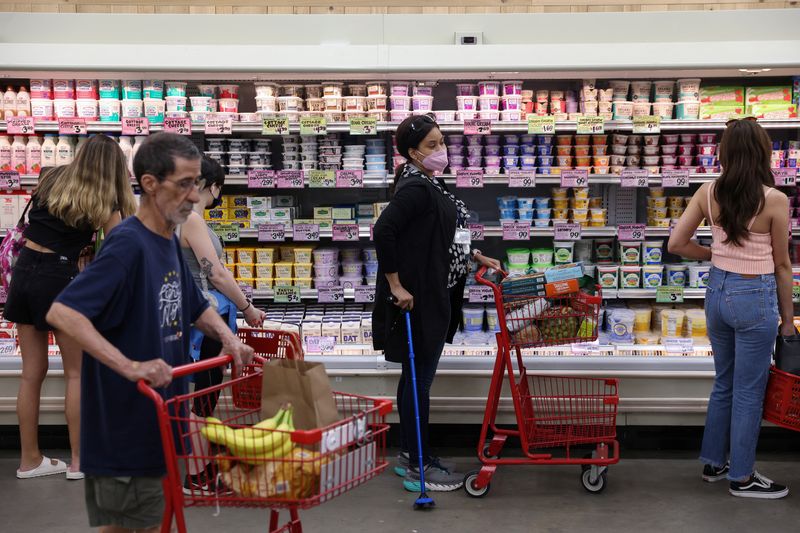Fed’s Daly: bringing down inflation is ‘number one priority’
2022.06.24 23:55

People shop in a supermarket as inflation affected consumer prices in Manhattan, New York City, U.S., June 10, 2022. REUTERS/Andrew Kelly
(Reuters) – Bringing down inflation is the U.S. central bank’s “number one priority right now,” but raising interest rates to do so is unlikely to trigger a recession, San Francisco Federal Reserve Bank President Mary Daly said on Friday.
The central bank’s 75-basis-point interest rate hike last week to a range of 1.5%-1.75% “puts policy on an expeditious path to netural by the end of the year,” Daly said in remarks prepared for delivery to Chapman University.
“After that, I see additional tightening beyond neutral as the next likely step,” she said.
Exactly how high rates need to go will depend largely on factors outside the Fed’s control, she said.
That is a point Fed Chair Jerome Powell has also emphasized because much of the current inflation stems from rising energy and food costs related to Russia’s war in Ukraine, and ongoing supply chain and labor supply constraints.
“If supply continues to fall short and inflation remains high, we will need to do more,” Daly said. “If conditions improve and supply bounces back, we can do less.”
Either way, she said, the economy will likely slow and the unemployment rate will likely rise from the current 3.6% level.
But it is not likely to lead to the kind of painful recession that followed in the 1980s, the last time the Fed raised rates sharply to fight high inflation, she said.
The costs of adjusting to higher interest rates and slower growth will be smoother this time around, she said, in part because inflation expectations are much better anchored, and in part because higher rates should cool inflation by reducing excess demand for goods and labor, well before they start to cut into actual production and employment.
“I do expect the costs of adjustment to be moderate, with some slowing of GDP growth below its longer-run trend and an increase in the unemployment rate from the very low levels we see today,” she said.
“This would, to my mind, constitute a relatively smooth transition from a pandemic-wracked, highly accommodative economy to one in which tighter policy supports both full employment and price stability.”








